Baseball History Comes Alive Now Ranked #2 by Feedspot Among All Internet Baseball History Websites and Blogs!
Guest Submissions from Our Readers Always Welcome!
Scroll Down to Read Today’s Essay
Subscribe to Baseball History Comes Alive for automatic updates. As a Free Bonus, you’ll get instant access to my Special Report: Gary’s Handy Dandy World Series Reference Guide!
“Amazin Mets” Photo Gallery
Click on any image below to see photos in full size and to start Photo Gallery:
Today, Michael Keedy takes a slight respite in his countdown to the Top Ten Greatest World Series Catches. In this interlude, he chooses instead to give us a brief history of the “Amazin Mets.” So I think we can easily surmise where he is going with his next entries of his greatest catches series. Stay tuned! -GL
The “Amazin Mets,” 1962-69
“The Mets have shown me more ways to lose than I even knew existed.” -Manager Casey Stengel
When baseball owners Horace Stoneham and Walter O’Malley took their teams west after the ’57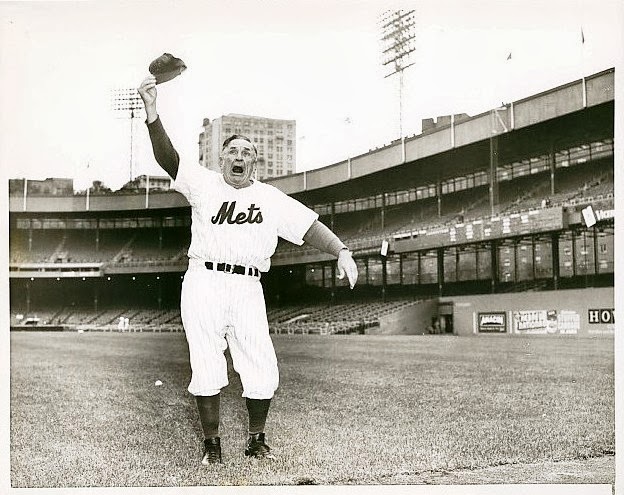 season, National League fans in New York suddenly were left with no one in particular to root for. Denizens of Upper Manhattan and Brooklyn felt the loss most deeply, to be sure, but they were not alone in craving a replacement for their dearly departed Giants and Dodgers. A familiar, reassuring part of their lives had vanished with the last train for the coast.
season, National League fans in New York suddenly were left with no one in particular to root for. Denizens of Upper Manhattan and Brooklyn felt the loss most deeply, to be sure, but they were not alone in craving a replacement for their dearly departed Giants and Dodgers. A familiar, reassuring part of their lives had vanished with the last train for the coast.
By 1961 expansion added two teams to the Junior Circuit, raising hopes that a National League newcomer the following season could find a home in New York. That happened, of course. The freshly-minted “Metropolitans” of 1962 took up residence in the Polo Grounds, and a league now boasting ten teams embarked upon a 162-game schedule, mirroring what the American League had done the year before.
But the Lords of Baseball, craftier than ever following the expansion draft of ’61, offered the Houston Colt .45s and New York Mets shamefully slim pickings and starting blocks that were shockingly behind the curve as a result. By the end of its first season, New York had lived down to the most pessimistic of expectations with an amalgam of well-traveled veterans, untried and equally uncertain hopefuls, and a marginally productive cast of low-grade utility players.
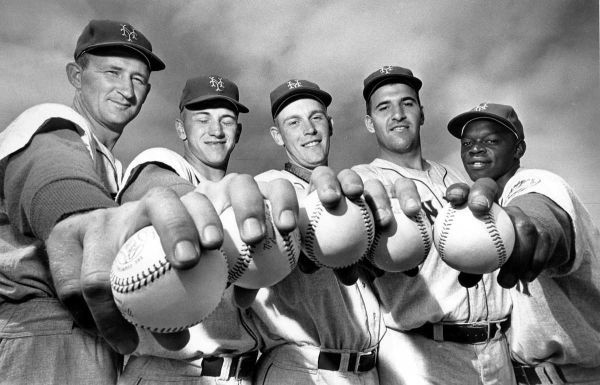
Aided by seasoned and/or promising pitchers Roger Craig, Al Jackson, Craig Anderson, and Jay Hook, who together conspired to drop exactly 80 games, these Mets stormed to an all-time record 120 losses, just a tad off the pace set by San Francisco and Los Angeles, the very clubs that had blown town under cover of darkness a few years earlier. For all their ineptitude, and perhaps to a large extent because of it, the Mets still managed to attract a couple million hungry and delirious fans in their first two seasons, with unlikely but wildly popular icons such as Marv Throneberry, Charlie Neal, and Chris Cannizarro showing the way.
While these guys in orange and blue were navigating the choppiest of waters on their maiden voyage to sports mediocrity, a young and optimistic president captured the country’s imagination that September by pledging the U.S. would put a man on the moon before the end of the decade. As ambitiously unrealistic as that lofty goal seemed then, if anyone had suggested the Mets could win a world title in the same length of time, men in white coats would have found him a new place to call home. Perhaps reflecting JFK’s can-do mentality, however, the “Amazins” would chase down and capture that dream, not because it was easy, but “because (it was) hard.” And chase it they did!
Lurching through the turbulent ’60s, these lovable but laughable losers staggered to the finish line dead last five times in their first seven years, and a distant ninth the other two (’66 and ’68). According to the finest odds-makers Vegas had to offer, the chances of their landing in first place by ’69 were, oh, one in a hundred, i.e., far slimmer than landing a human being on the moon.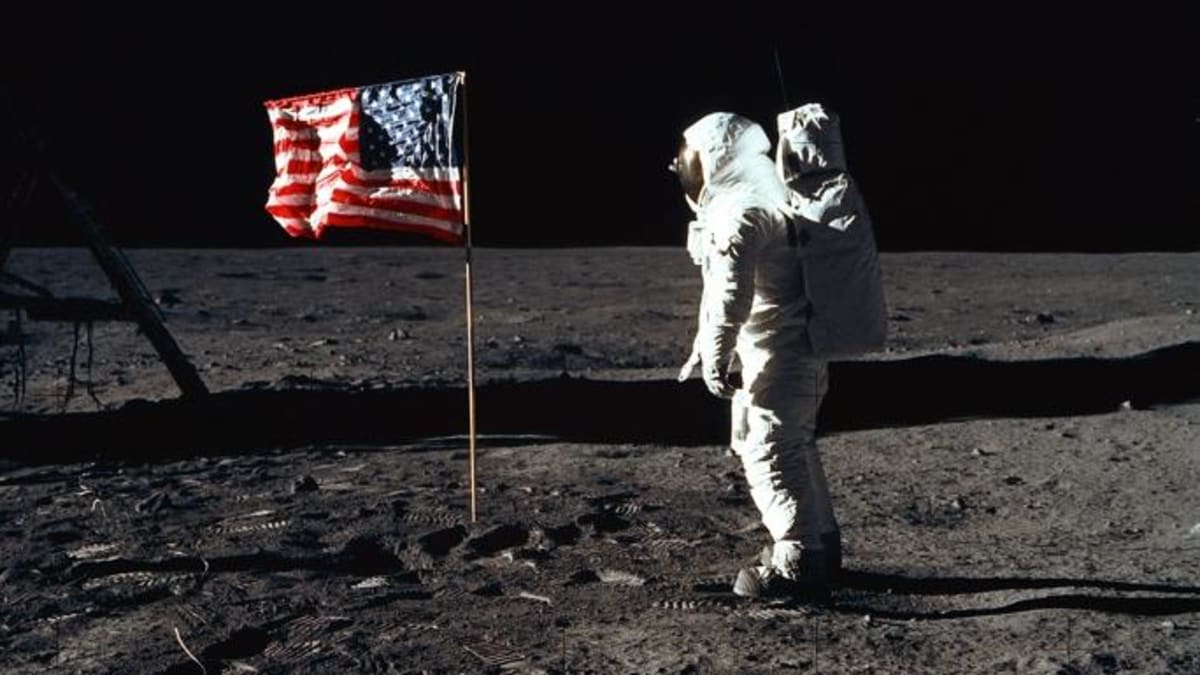
Although equally as tempestuous as the rest of the decade, the year 1969 was to be one of the most stirring and unforgettable of our lives. Kennedy’s outlandish promise was kept posthumously with the help of Neil Armstrong that July, when he took a “giant leap for mankind.” An unpopular Asian war that had ruined Lyndon Johnson’s re-election prospects the year before raged on, dividing the country ever further with each passing day. “Chappaquiddick,” as it was quaintly but descriptively dubbed, erased any reasonable chance that the last surviving son of Joseph P. Kennedy would ever become president. Thousands of revelers were drawn to Woodstock that summer; the nation was riveted and repulsed by Charles Manson and his murderous minions; Broadway Joe and the Jets upset Baltimore; “Abbey Road” became the Beatles’ very last album, and both the aforementioned Joe Kennedy and Dwight Eisenhower shuffled off this mortal coil.
The New York Mets, meanwhile, were setting the world of baseball on its ever-lovin’ ear. With the encouragement of a steady and cerebral manager whose own legendary playing career was now well behind him, they began to believe in themselves as never before. Although trailing Chicago in the standings, for the first time in their sorry history they wrapped up the month of June with a winning record. Blow me away!
“You can observe a lot by watching.” Whether Yogi actually uttered those immortal and provocative words, I resolved to check out the Mets for myself in early July, just as New York was invading St. Louis. They promptly dropped a doubleheader to the defending N.L. champions on the first, which was no great surprise. (Here we go again.) But the game I witnessed, July 2, 1969, told me these perennial also-rans were finally and truly for real. More than that, they were now actually legitimate contenders.
Of course, I knew – or thought I did – that no single ballgame could possibly be a reliable barometer of a team’s strengths and weaknesses over an entire season. Yet, as I walked out of Busch Stadium 14 grueling but revealing innings later, I felt certain the Cardinals had just been outplayed by the league’s team of destiny for 1969. (“Seeing is believing,” and thank you, Yogi Berra.)
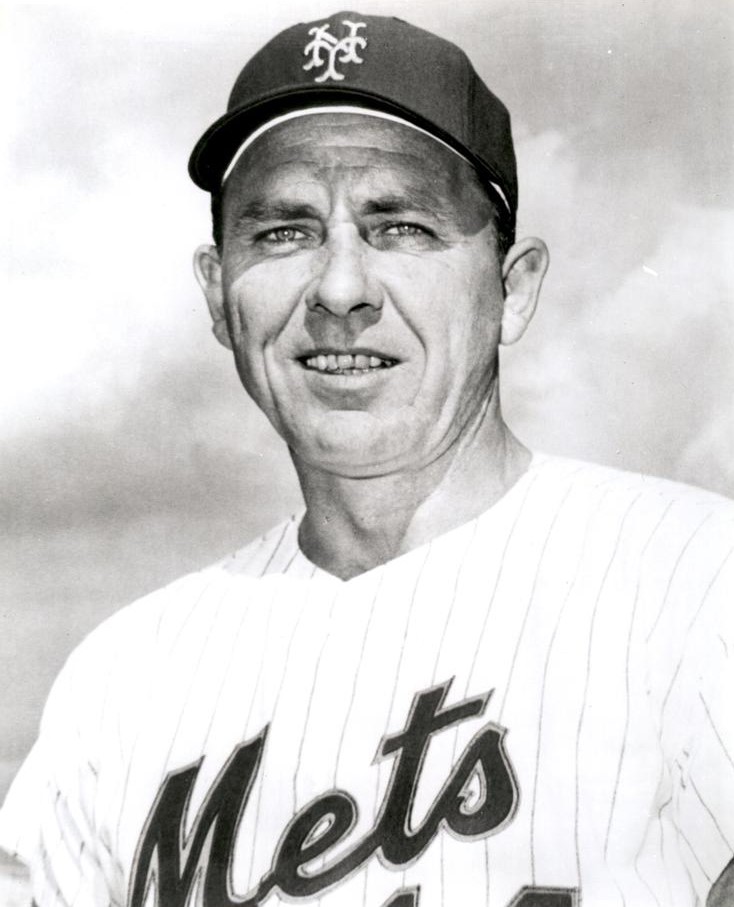
Gravitating grudgingly but dutifully to The Great Gil’s platooning approach as the season wore on, and relying on a magical blend of outstanding pitching, fortuitous hitting, and captivating defense, the Mets stayed fresh and competitive through the Dog Days, winning 38 of 49 ballgames down the stretch. Having trailed the front-running Cubs by ten full games in mid-August, the Miraculous Mets hit the tape “going away” that autumn, finishing a commanding eight games on top. Koosman and Tom “Terrific” Seaver combined to go 42-16, which compared favorably with the 18-44 record rung up by Craig and Jackson seven miserable years before.
In this, the inaugural season of division play in major league baseball, the Amazins would have to scale yet another mountain of tall odds just to make it to the World Series. The Braves, champions of the so-called “West,” stood squarely in their way. But Gilbert Ray Hodges, with “twenty-five guys who think they can,” guided his team of true believers to a shocking sweep of Atlanta. (William T. Sherman would have been proud.)
Suddenly, the mesmerizing Mets of ’69 were in the World Series. Believe! Now, all they had to do was get by the Baltimore Orioles, winners of 109 regular-season games and the scourge of Minnesota, whom they had mercilessly eliminated in three straight divisional playoff games of their own. As baseball fans and historians know, these upstarts from the Big Apple would need a timely collection of unbelievable defensive plays to knock off the very creme de la creme of the major leagues.
Next up: Three Catches for the Ages
Michael H. Keedy
Subscribe to our website, “Baseball History Comes Alive!” with over 1200 fully categorized baseball essays and photo galleries, now closing in on the one million hits mark with 901K hits and over 700 subscribers: www.baseballhistorycomesalive.com

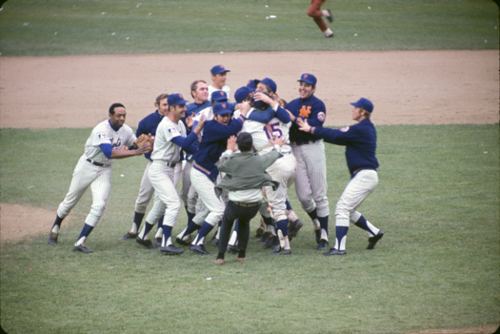
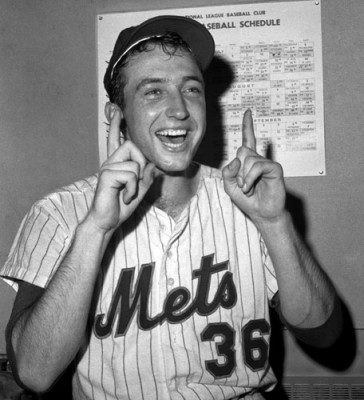


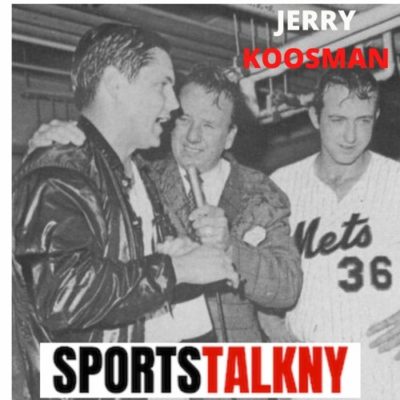
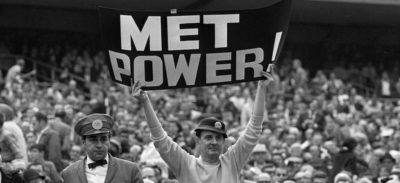
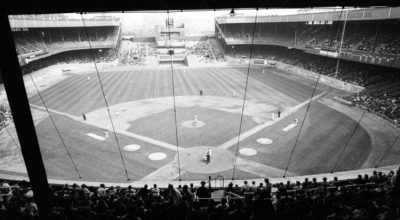
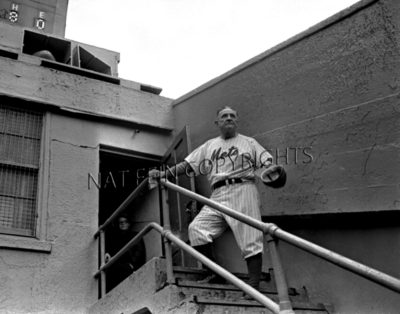
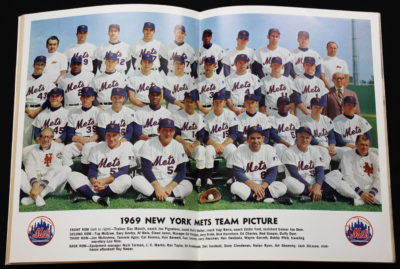
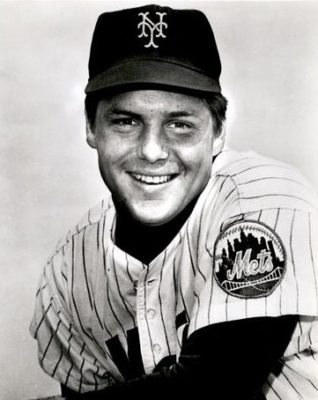
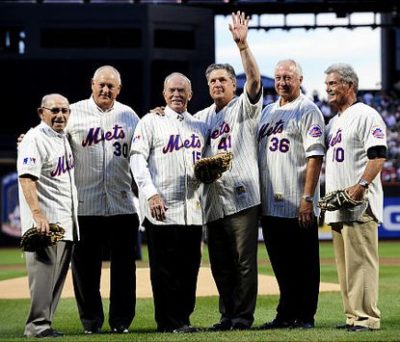
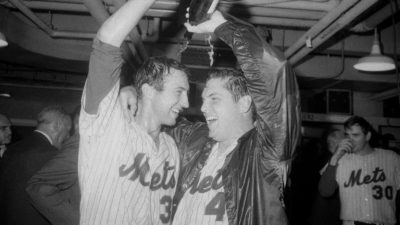
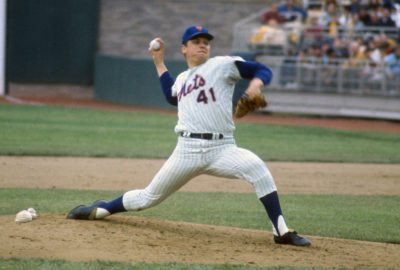
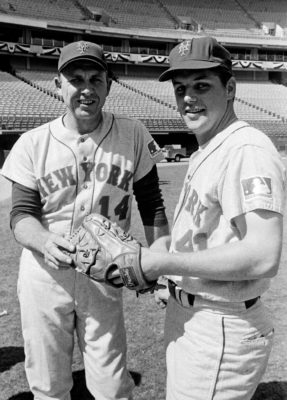
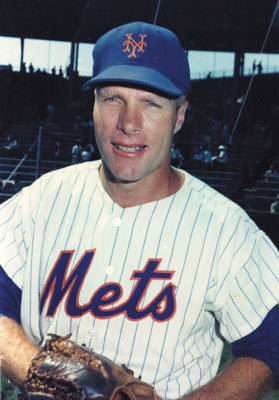
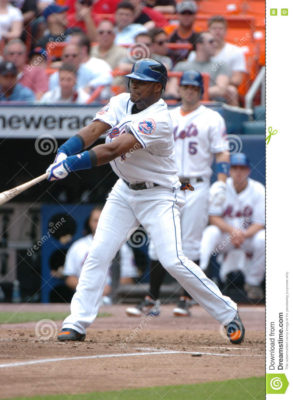
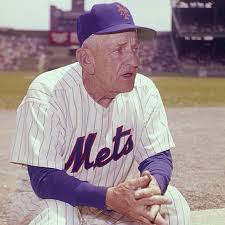
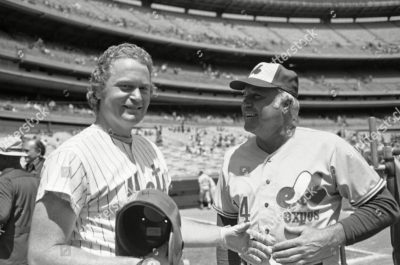
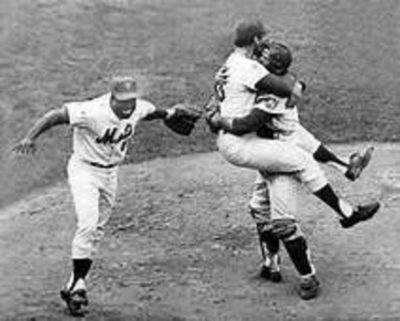
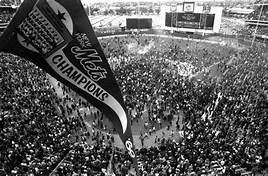
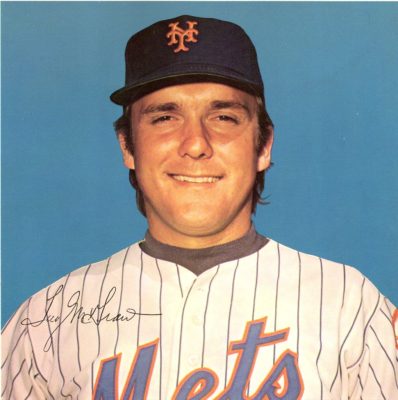
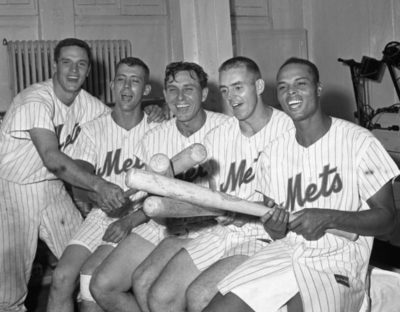
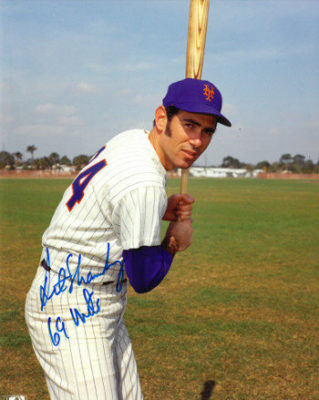
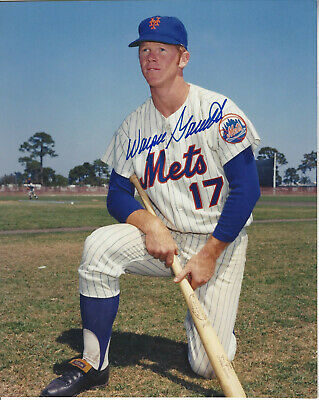
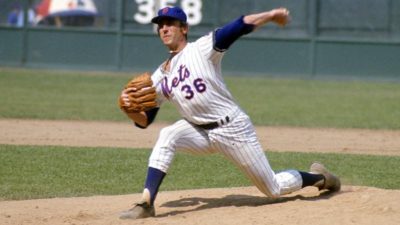
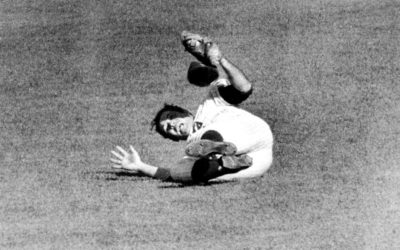
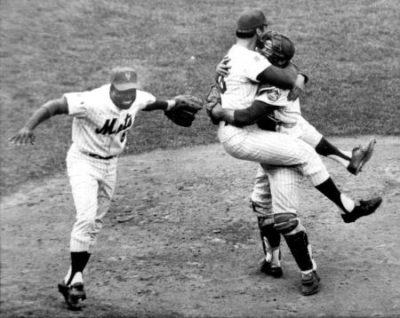
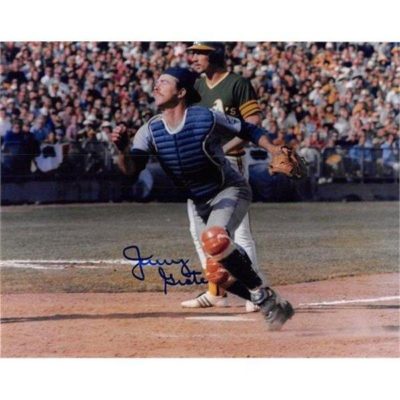
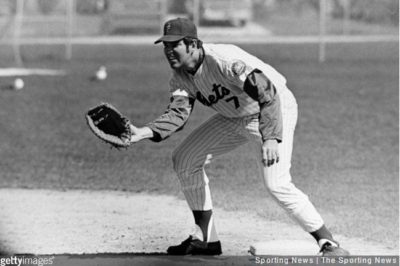
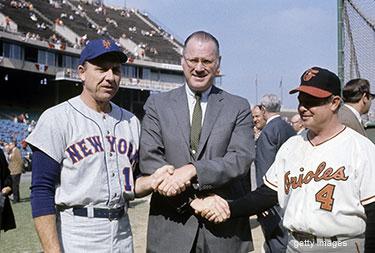
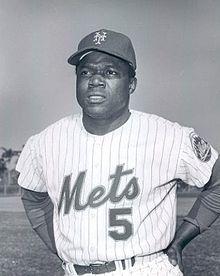
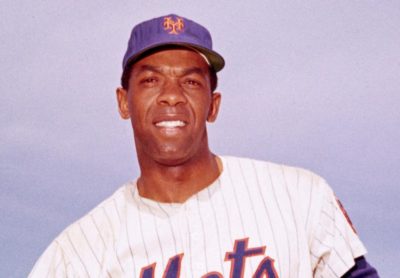
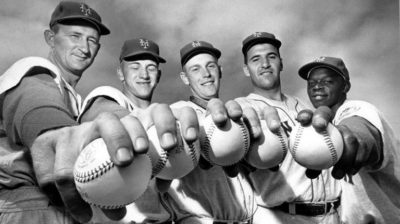
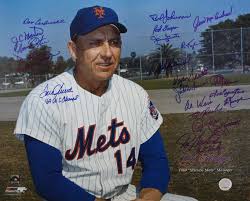
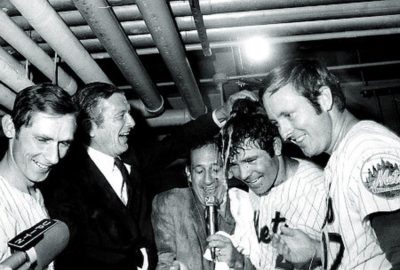
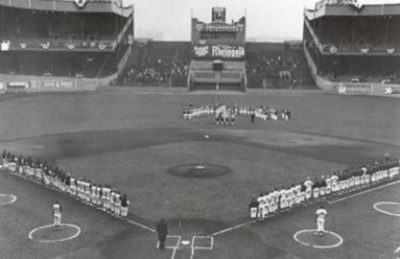
Hey Michael:
Can it be true? When you started the series I hoped at least one of those catches would be chosen. Now it looks as if all three will be; and on top, to boot.
Fingers crossed,
Joan
PS: Even if it isn’t all three, I’ll still be a happy woman.j
Re: Pic #3 of Seaver and Koosman. Man in the middle appears to be Nolan Ryan.
Thanks Terry…you’re right!
The ’62 Mets were something else. The article never mentioned Choo Choo Coleman, one of their catchers. When he was being interviewed on “Kiner’s Korner”, Ralph asked him “What’s your wife’s name and what’s she like?” Choo Choo answered, “Her name is Mrs. Coleman and she likes me.” Casey always talked about how much speed Choo Choo had for a catcher. “You should see how fast he chases down all of his passed balls!”
Marv Throneberry once hit a triple and they appealed saying he missed second base. Casey came out to argue, and the umpire told him “Save your breath, Casey; he missed first base also!” Casey told the ump, “Well, I know he touched third base, because I can see him standing on it!”
On an unrelated note, I did get to see, as an 11 year old, the first shutout by a Mets pitcher (Al Jackson-8-0 over the Phillies) at the old Polo Grounds.
During the 1962 season, Mets center fielder Richie Ashburn and Chacón frequently found themselves colliding in the outfield. When Ashburn went for a catch, he would scream, “I got it! I got it!” only to run into the 160-pound Chacón, who spoke only Spanish. Ashburn learned to yell, “¡La tengo! ¡La tengo!” which is “I’ve got it” in Spanish. In a later game, Ashburn happily saw Chacón backing off. He relaxed, positioned himself to catch the ball, and was instead run over by 200-pound left fielder Frank Thomas, who understood no Spanish and had missed a team meeting that proposed using the words “¡La tengo!” as a way to avoid outfield collisions.[2] After getting up, Thomas asked Ashburn, “What the hell is a Yellow Tango?”.[3] The band, Yo La Tengo, gets its name from this baseball anecdote.[4]
From Wikipedia
Perhaps the “funnest” fact I know about the inaugural Mets is that over the course of the season they had SEVEN 3rd-string catchers on their roster: Chris Cannizzaro, Harry Chiti, Choo-Choo Coleman, Joe Ginsberg, Hobie Landrith, Joe Pignatano, & Sammy Taylor. [Taylor was my favorite, because I really liked his ’61 Topps card as a Cub!]
Funny stuff from de Kater, Cooldrive and Denny, Mr K. And that’s a nice running start to World Series Greatest Catches, next chapter.
But I’m afraid I’ll have to “unlike” you, if you don’t agree with my first choice. To me, it’s so obvious. We shall see.
Turning point, in my book, in ’69 was Mets 1-0 vs. Padres, Wed. May 28. Jerry Koosman had maybe his best game as a Met. 10 innings, no runs, 15 K’s. They went from five under .500 to six games over.
It was akin to Rocky 1 when the plodding “Stallion” unleashed a powerful, roundhouse left to deck Apollo Creed in the first round. Fans of both Balboa and the Mets realized instantly that the mediocrities had morphed into champions.
Look forward to the next dose of brilliance, Professor Wordsmith.
Hey Bill:
Did I miss something? What was your first choice? I assume you are referring to a World Series catch.
Also, enjoyed the Rocky/ Mets analogy.
Being a Mets fan in 1969 was pretty heady stuff. And one of the best things about it was the whole team’s salaries probably amounted to half that of the new yearly take for one star player. Although great stars emerged from those players, Gil’s platooning kept them on a more equal footing as far as each player’s contributions. Every man earned his glory as well as his ring, a true team effort. A beautiful thing to behold in a beautiful time to be a fan of baseball. It breaks my heart to see how greed on all levels has caused such a decline in the game I once loved. Perhaps, one day, people will stop going to stadiums and stop watching it on tv. Maybe if the only baseball game you can see is a bunch of kids with a few bats, some old mitts and a couple of well-used balls playing an unsanctioned by Little League
game in a lot someplace, we’ll get our baseball back and a little sanity in this old world as well.
Here’s hoping,
Joan
Thanks Joan. Great insight. I share your sentiments completely and I’d bet a lot of the people who frequent this site do too.
Nicely said, Joan. When I first became immersed in the NY Giants, rookies made 5k per year and pitcher Dave Koslo worked as a mailman in the off season.
Jesting with the illustrious Michael K about his top pick for Greatest WS Catches. Don’t want to steal his thunder leading up to the finale, so I’ll wait and then we’ll all go back and forth.
The Jerry Koosman gem in May of ’69 started an 11 game streak, which put the Wunderkinds on the map for the first time. Glad you liked the analogy, it was inspired!
Hi Guys:
Thanks for the shout out for Jerry Koosman, Bill. I have no problem with Tom Terrific.” He really was. However, in all the hoop-la for Seaver I don’t think Jerry ever got the accolades he deserved. He pitched many gems. He was the better clutch pitcher in my opinion. Even when he was a young guy he had an air of maturity about him; a self-assurance he knew exactly what his job was and he had every intention of doing it to everyone’s satisfaction. For me Tom was Terrific and Koosman was King. Come to think of it, adding in Gary Gentry, Noan Ryan et.al….those blooming Orioes never had a chance.
It isn’t often I talk about this. Tom Seaver’s fans are a little touchy about his exalted status. Just to hint that another pitcher was as good as Tom is almost akin to blasphemy in there eyes. Before I get in anymore trouble, I’d better sign out.
Kind regards,
Joan
Hi Y’all,
These points/counter-points and “do-you-remembers” from so many (older?) fans of the game when it was played before the almighty dollar seized it by the throat really help to make my current writing assignment totally worthwhile. You have no idea how much you contribute to the experience! Many thanks for that.
Speaking of the Jerry Koosman, and a NYM “turning point” in the book of a world-class student of the game (you know who you are) reminds me to add this vignette from my own memory-bank of defining moments in their ’69 season. In the interest of space Gary and I left it on the cutting-room floor, but here’s a glimpse of it:
On July 2, without his best stuff, the Cruise-Man held the Cardinals scoreless into the eighth inning before Vic Davalillo tied things up with a bases-loaded dinger off relief pitcher Ron Taylor. Tug McGraw then came in and shut down St. Louis over six full innings, with considerable help from his friends in the field, and the Amazins won it in the 14th, 6-4. As I left Busch Stadium, having obeyed Yogi’s admonition to “observe a lot by watching,” I could tell these underdog scrappers were the new toasts of Broadway.
They pitched with the tenacity of a winner, with or without their “A” material.. Their defense was superb. Their hitting wasn’t particularly overpowering, but its timeliness was lethal. For the first time ever, I thought they could go the distance. (Take that! you N.L. champion Redbirds and all you Apollo Creeds out there.)
A heated debate awaits us as we try to outline the top-3 all time catches in the series, but I don’t care. As Prof. Schaefer said a while back, that’s what’s fun about this project. Everybody else’s voice is just as valid, and valuable, as mine.
So please! Keep those cards and letters coming. I love it.
Best wishes,
Michael
Dear Michael:
God bless you for those kind words. As one approaches doddering old-lady hood, it’s nice to know one’s opinions are still relevant and valued. At least this “one” does.
Thanks,
Joan
PS: Has any other female ever posted to this blog? I’m beginning to feel like the only weed in a garden.
Gil Hodges daughter has chimed in a couple times.
A red rose among the tumbleweeds!
M
Joan,
Don’t talk about “doddering old-lady hood” you’re younger than me! And I’m not doddering (well, maybe a little but that’s only after two martinis).
My sentiments exactly about Seaver/Koosman. I always thought Koosman was the better “big game” pitcher, he would be my choice with the season on the line. Also, I feel the same way you do about a sense of blasphemy when even suggesting to Seaver fanatics that anyone even approached the “terrific” one. We have a lot in common.
I will say that I approached Tom, as a fledgling broadcaster in April 1969 at Connie Mack Stadium, without introduction. He couldn’t have been nicer, he treated me like I was Vin Skully and gave me a wonderful interview. Little did we know what would happen later that year
But Koosman was still the better clutch pitcher, Joan!
Make that Vin Scully. Maybe I am beginning to dodder at that.
Hey Bill:
GET OUT! I can’t believe it You are the only person in all these years to agree with me about Koosman. Whenever I said anything about preferring Jerry was pitching an important game, heads would turn to look at me with faces that seemed to be contemplating calling the men in white jackets to come take me away. It happened often enough for me to keep my mouth shut about it.
Thanks for the bit about Seaver. I’ve never heard an unkind word about him. He always seemed a great guy and this is another affirmation of his character.
Bill, you made my day in more ways than one. I looked at your original spelling of Scully, and didn’t realize you had misspelled it. Lots of laughter went on after you corrected yourself, because I never saw it. Another touch of doddering?
Best,
Joan
Hi Mike:
How kind you are to make me a rose.I have to smile about your analogy. I doubt you realized how appropriate it was. Our last name is Tumbleson and my kids were called tumbleweeds all during their years in school, probably elementary through junior high.
Best,
Joan
Yeah, most would not notice, Joan, but I can’t risk, “What the bleep is wrong with that…”
For some reason, I always want to put a K in Vin’s name.
He was like no other. Years ago I tuned in by chance to hear Scully doing a TV holiday season parade with a young, polished female co-host. With each passing float, Vin seemed to have a point of interest or pertinent anecdote. His partner finally said, “Where do you get all this information?” Scully replied, “Oh, books.” Preparation. That’s what made him so great, whether it was a parade or baseball.
Best, Bill
Hi Bill:
A light bulb just went on in my head. As I was starting to compose this message before committing it to type I realized this is like our Seaver fandom/Koosman prowess discussion previously. But, I’m on the side of the fandom in this scenario. I’m talking about Red Barber with regard to Vin Scully. I was a fan when Scully was hired and tutored by Barber. I remember thinking, as time went by, that Scully sounded as if he were trying to BE Barber. I didn’t appreciate it. In his article about the movie “42” David J. Halberstam wrote Scully said Barber was his mentor. I thought how generous of him, that’s like saying Warren Buffet has a few bucks.
In fairness, I have to say, when the Dodgers went West, I never heard Scully call another game and have no idea how his “style” evolved. How about that, Bill. In a few posts you made it possible for me to see my own prejudice and understand “fandom” mentality a whole better. Thank you.
Kind Regards,
Joan
Thanks, Gary. I know you mentioned she had been in touch, but never saw a post from her.
Best,
Joan